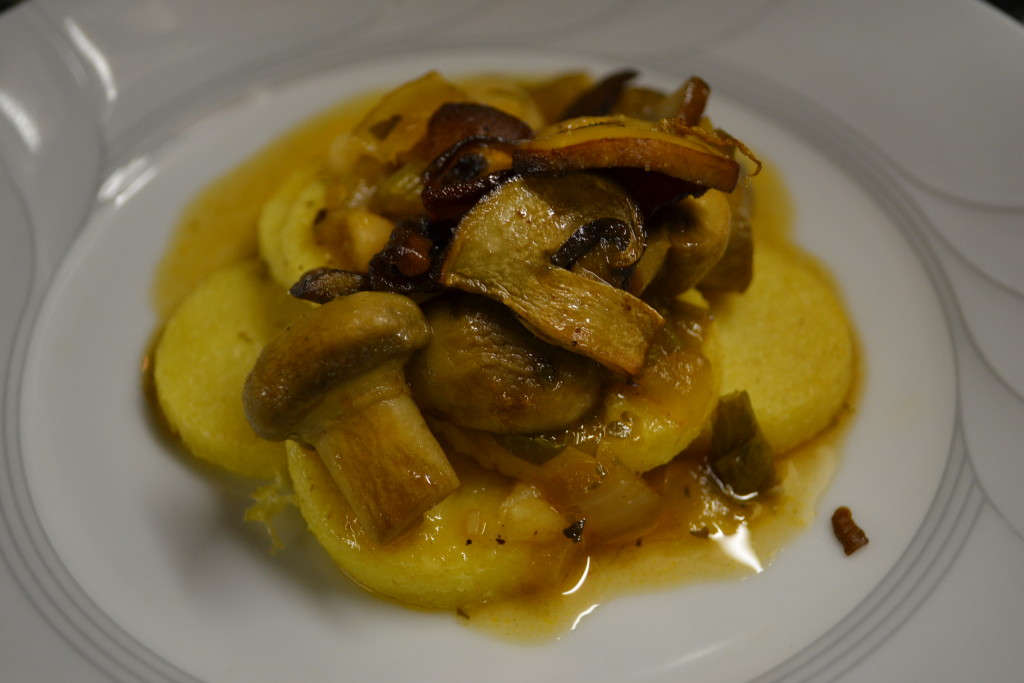On Sunday supplement
Food and Wine
I’ve heard it said that the difference between French and Italian cooking is that for the former, it’s all about sauces, and the latter, it’s all about the main ingredient. While there’s ostensibly some truth to that, when it comes down to it, both cuisines have sauces – albeit that France’s are codified into vast tomes that detail “correct” methods and Italy’s are passed around by word of mouth or carried to the grave without ever having been spoken aloud or written down. And both cuisines rely on the best of ingredients – as does any culinary tradition out there – otherwise we may as well toss a TV dinner into the toaster oven and call it quits.
Ambrose Gwinnett Bierce, noted American author and satirist, is quite possibly best remembered in the latter category for his tongue-in-cheek The Devil’s Dictionary, which basically makes fun of everything sacred to politicians, self-important people, and, well, pretty much the rest of humanity. I like to keep his definition of sauces handy, just to remind myself how important they can be to a cuisine:
“SAUCE, n. The one infallible sign of civilization and enlightenment. A people with no sauces has one thousand vices; a people with one sauce has only nine hundred and ninety-nine. For every sauce invented and accepted a vice is renounced and forgiven.”
Within the Italian canon, beyond the ubiquitous marinera, the tomato sauce often referred to by descendants of Italian expats as either red sauce or gravy, neither of which truly captures it – there are a vast number of others, particularly for pasta. One of my all time favorites is the classic roast pork sugo, an amazingly delicious combination of roast pork, white beans, aromatic vegetables, herbs and wine that, rustic or not, tends to bring tears of joy to the eyes of those dipping into it.
Recently I was asked to come up with a version of the same for a vegetarian dinner, and while I could have played around with something as off-putting, but commonly used, as seitan, or cooked wheat gluten, or perhaps tofu, I decided against it. Instead, I went for a combination of mushrooms that could be cooked in different ways to emphasize their depth of flavor. My favorite pairing for this being Roman semolina gnocchi – completely different from potato gnocchi. It’s also delicious over ricotta filled manicotti, canelloni, or ravioli.
Mushroom Sugo
1 can of white beans (roughly 210gm drained weight), rinsed
2 ribs of celery, leaves included, chopped
1 large onion, chopped
3 cloves of garlic, finely chopped
1 tablespoon of dried oregano (or 2 tablespoons of fresh leaves)
1½ tablespoons tomato paste
220 ml of dry white wine
500 gm of white button mushrooms, sliced in half
4 tablespoons olive oil
1 tablespoon white wine vinegar
440 ml of mushroom or vegetable stock
200 gm small portobello mushrooms, sliced
100 ml olive oil
salt and pepper
In a saucepan cook the onion, celery and garlic in 2 tablespoons of the olive oil over medium heat until the onion is soft and translucent. In a separate frying pan, over high heat, bring the other 2 tablespoons of olive oil to just the point where it’s starting to smoke, add the mushroom halves, a little salt and pepper, and cook, stirring regularly, until they’re nicely browned on the outside.
Add the tomato paste, wine, vinegar, and oregano to the vegetable mixture and cook until about half the liquid is absorbed. Add the beans and the browned mushrooms to the pot along with the stock. Bring to a boil, reduce the heat to very low and let simmer for 45 minutes, occasionally stirring it.
Back in the frying pan, heat up the 100ml of olive oil, again to just the point where it’s starting to smoke, and add the portobello slices to it. Here you’re going to cook them until they’re golden brown and a just getting crisp – more or less deep-frying them. When they’re all brown, scoop them out with a slotted spoon and let them drain on some paper towel. Sprinkle lightly with salt and pepper.
Ladle the sauce over pasta or gnocchi and then top with a scattering of the crispy portobello “chips”. Dig in!
A series of recipes and articles that I started writing for the Buenos Aires Herald Sunday supplement, Food & Wine section, at the beginning of 2012. My original proposal to them was to take local favorite dishes and classics and lighten them up for modern day sensibilities. We’re not talking spa or diet recipes, but at the very least, making them healthier in content, particularly salt, fat and portion size. As time went by, that morphed into a recipe column that, while emphasizing food that is relatively “good for you”, wasn’t necessarily focused on local cuisine. At the beginning of 2013 I decided to stop writing for them over some administrative issues, but it was fun while it lasted.
